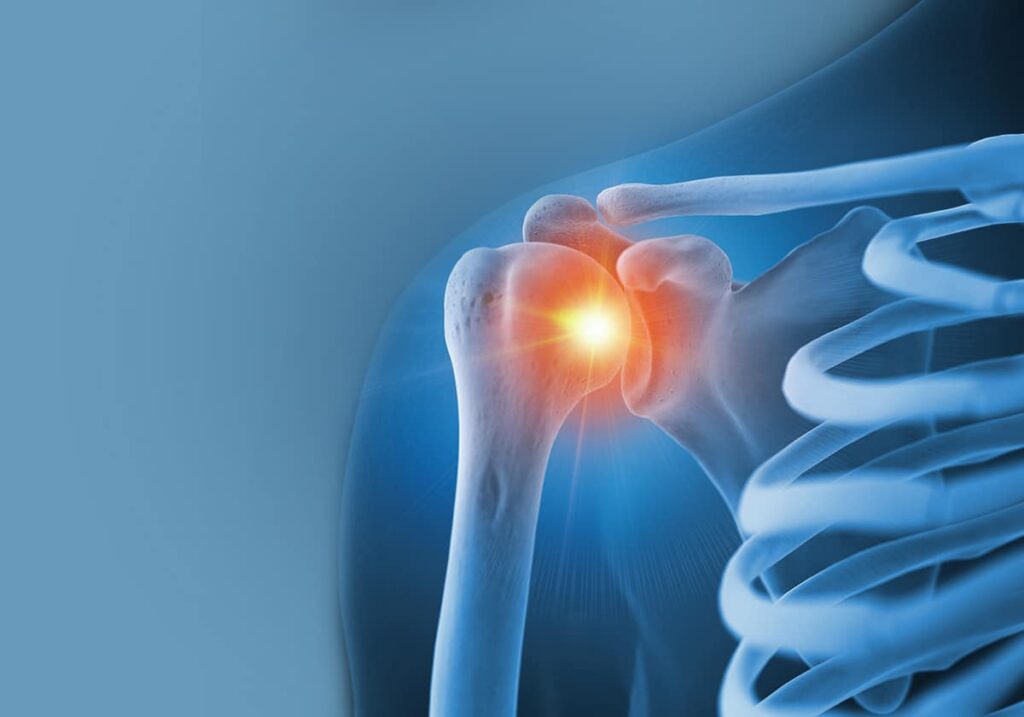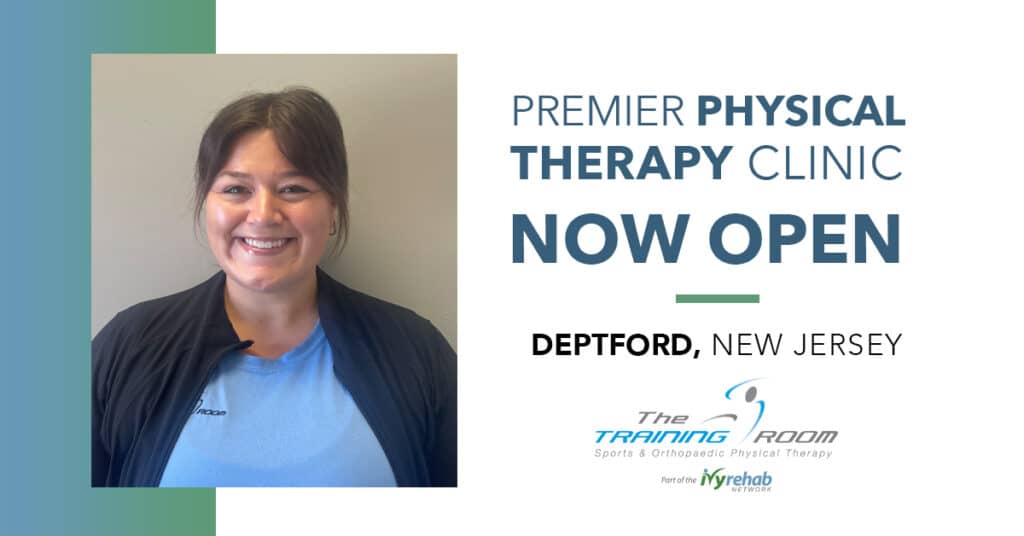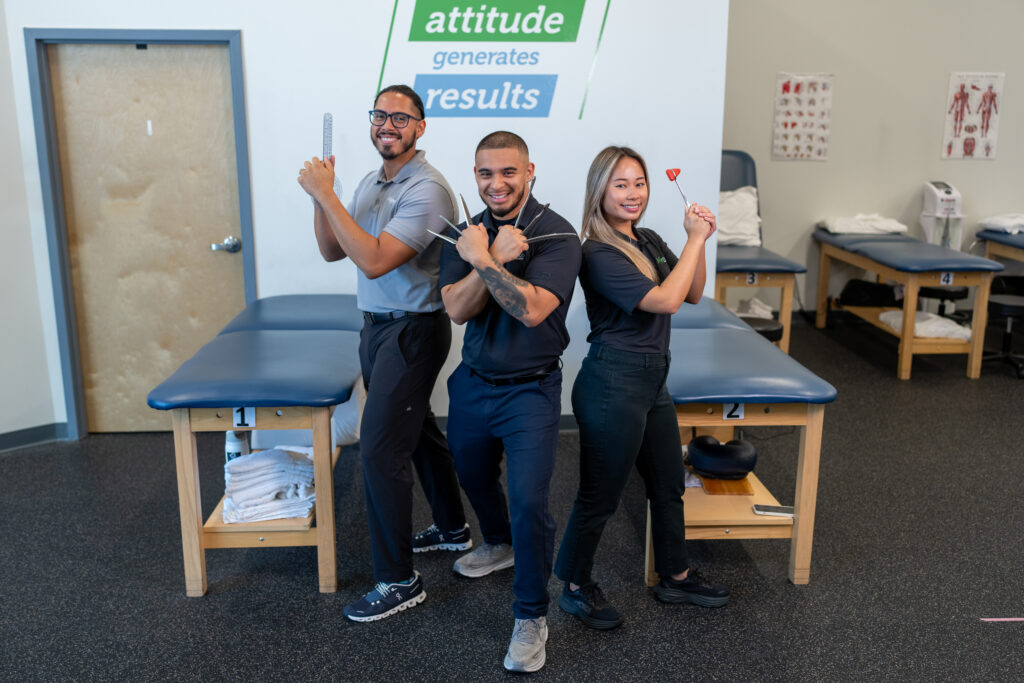The shoulder is a highly mobile joint and often one of the first joints in the human body to develop arthritis. The shoulder joint is a ball and socket joint between the shoulder blade (scapula) and the upper arm bone (humerus). Other important bones in the shoulder include the “roof” of the shoulder joint, which is made up of the acromion (a bony projection off the shoulder blade) and the collar bone (clavicle).
Total shoulder joint replacement surgery is the 3rd most common joint replacement and is a highly successful procedure. Another name for the Total Shoulder Replacement is Total Shoulder Arthroplasty (TSA). This procedure, along with physical therapy, allows individuals to return to their previous level of functioning with significant pain relief. Discover more about shoulder replacement recovery time and what’s needed for a successful recovery.
How do I know if I need a shoulder replacement?
A shoulder replacement is usually indicated if a person is experiencing signs and symptoms consistent with shoulder arthritis or shoulder injury, such as:
- Shoulder pain
- Crepitus (crunching sounds)
- Shoulder movement difficulty
Initially, most doctors will try to treat this conservatively with cortisone and anti-inflammatories, but when these stop working- it is most likely a sign that joint replacement surgery is needed.
Types of total shoulder replacements
There are two common types of shoulder replacement surgery that are routinely performed: the traditional total shoulder replacement and reverse shoulder replacement surgery. Here is what to expect with each surgery:
- Traditional Total Shoulder Arthroplasty (TSA) – In a traditional TSA, the ball of the joint (head of the humerus) is replaced with a metal ball, and the socket is replaced with a smooth plastic cup.
- Reverse Total Shoulder Arthroplasty (TSA) – With the reverse total shoulder replacement, the ball and socket are switched: a metal ball implant is placed where the patient’s socket was, and a plastic socket is placed where the patient’s humeral head (ball portion of the joint) was.
Each shoulder replacement surgery is reported to be highly successful and the best option for you should be discussed with your orthopedic surgeon.
How long does a shoulder replacement take to heal?
The shoulder replacement surgery recovery timeline varies from person to person, but it generally takes eight weeks or more for patients to regain shoulder strength. Keep in mind though, that it may take several months for patients to return to strenuous exercise levels or heavy labor. It is especially important in the early stages of rehabilitation to listen to the guidance from the physical therapist to avoid any setbacks in the total shoulder replacement recovery process.
A typical shoulder replacement recovery process is as follows:
- 4-6 weeks: Patient is typically in a sling and must also avoid strenuous activity
- 6-8 weeks: Full shoulder movement is typically restored
- 8-12 weeks: Patients begin shoulder strengthening exercises and work toward returning to previous shoulder strength
- 3 months: Basic shoulder function is restored
- 1 year: At times, a full shoulder replacement surgery recovery can take up to 1 year to ensure a safe return to previous lifestyles and hobbies.
See related: Hip Replacement Surgery Recovery: 8 Tips
What is the fastest way to recover from shoulder surgery?
Some shoulder surgery recovery tips include adhering to guidelines and advice from your orthopedic surgeon and physical therapist.
The key components for an optimal recovery for shoulder replacement include:
- Proper pain management
- Keeping activity to defined parameters to avoid increased pain and doing too much, too soon
- Maintaining adequate nutrition and sleep – this allows for optimal healing and minimizing inflammation as your body recovers
How long does shoulder pain last after surgery?
Post surgery pain is well managed by nurses and doctors and typically does not last long. In the 1-3 days following orthopedic surgery, most people will experience pain at the incision site and will be given pain medication at home. Pain can also be managed by cold packs and additional treatment provided by a physical therapist.
Long-term care and maintenance
Once you’ve recovered from shoulder replacement surgery, it’s important to focus on long-term care to maintain the health and function of your new joint. With the right approach, you can enjoy lasting benefits and return to the activities you love.
Ongoing physical therapy
Continued physical therapy plays a key role in your long-term recovery. At Ivy Rehab, our specialized therapists work with you to develop a personalized exercise plan that strengthens the shoulder muscles and enhances joint flexibility. Regular sessions can help prevent stiffness and improve your range of motion, ensuring that your shoulder remains strong and functional.
Follow-up appointments
Routine check-ups with your orthopedic surgeon are essential for monitoring the condition of your shoulder replacement. These visits allow your surgeon to assess the wear and stability of the prosthesis and make any necessary adjustments to your care plan.
Activity modification
While shoulder replacement surgery can significantly improve your quality of life, it’s important to make certain modifications to your activities to protect the new joint. High-impact sports or activities that place excessive strain on the shoulder should be avoided. Your physical therapist can guide you on safe exercises and activities that keep you active without risking damage to the prosthesis.
Healthy lifestyle choices
Maintaining a healthy lifestyle is crucial for the longevity of your shoulder replacement. A balanced diet rich in nutrients, combined with regular exercise, supports overall joint health. Additionally, managing your weight helps reduce the stress on the shoulder joint, further prolonging the life of the prosthesis.
Pain and symptom management
Even after a successful recovery, it’s important to be mindful of any changes in your shoulder’s comfort or function. Should you experience pain, swelling, or reduced mobility, consult with your physical therapist promptly. Early intervention can help address minor issues before they become significant problems.
Seek physical therapy for shoulder surgery
Physical therapy will help you safely and optimally recover from your total shoulder replacement surgery. It ensures a holistic approach to healthcare that will assist the shoulder joint return to optimal functioning and will allow YOU to return to desired activities and hobbies pain-free. Reach out to Ivy Rehab today for more information on rehabilitation physical therapy options.
Article By: Bridgette Sakar, DPT, PT, OCS
Bridgette Sakar began her physical therapy career 7 years ago. Bridgette loves working with the athletic population and believes that an active body is a healthy body. Bridgette is a graduate of the HSS Ivy Rehab Orthopedic Residency Program and is a board-certified Orthopedic Clinical Specialist. She currently specializes in orthopedic and sports injuries. Bridgette currently treats patients at Ivy Rehab Physical Therapy in Denville, NJ.





